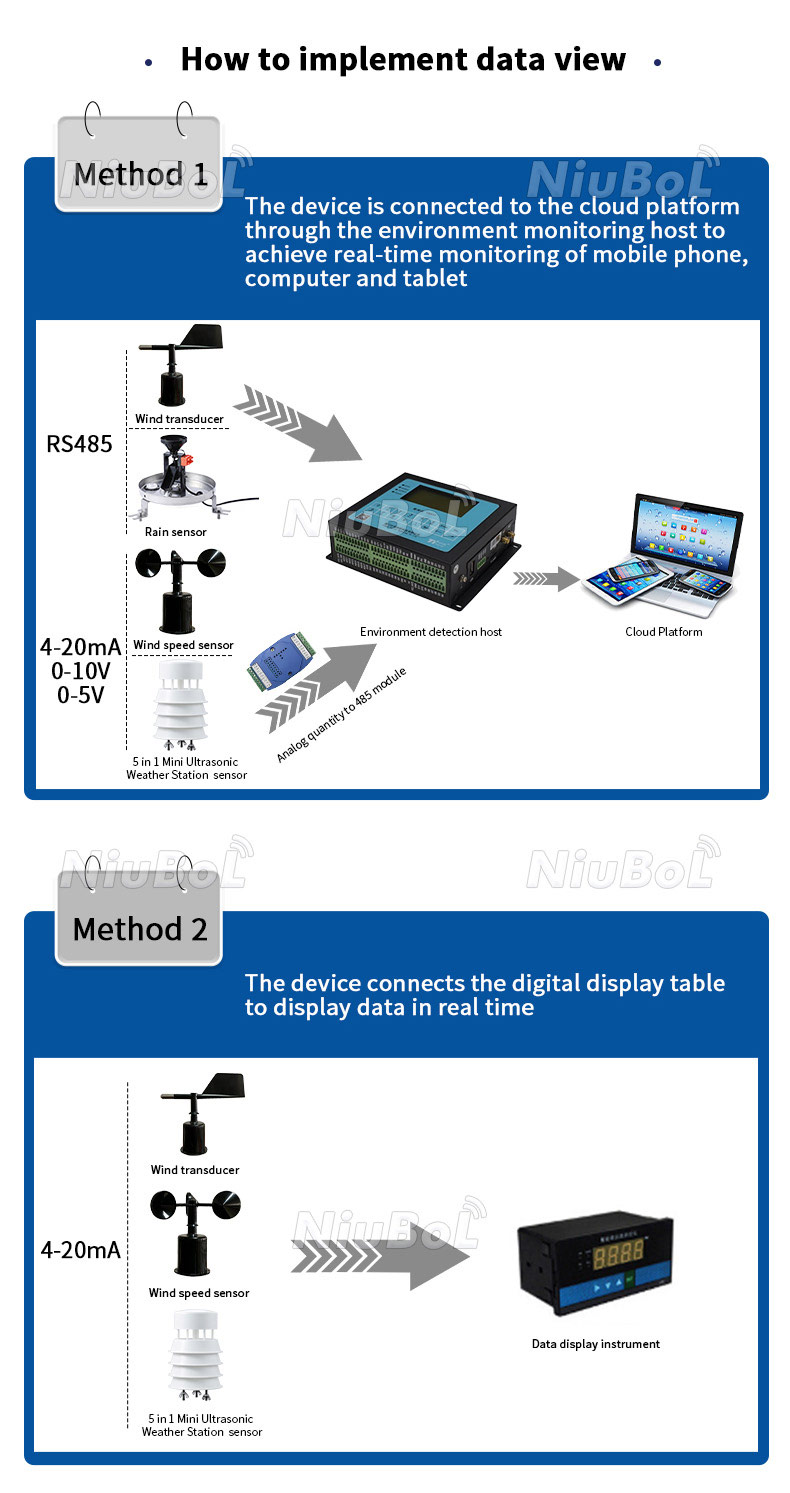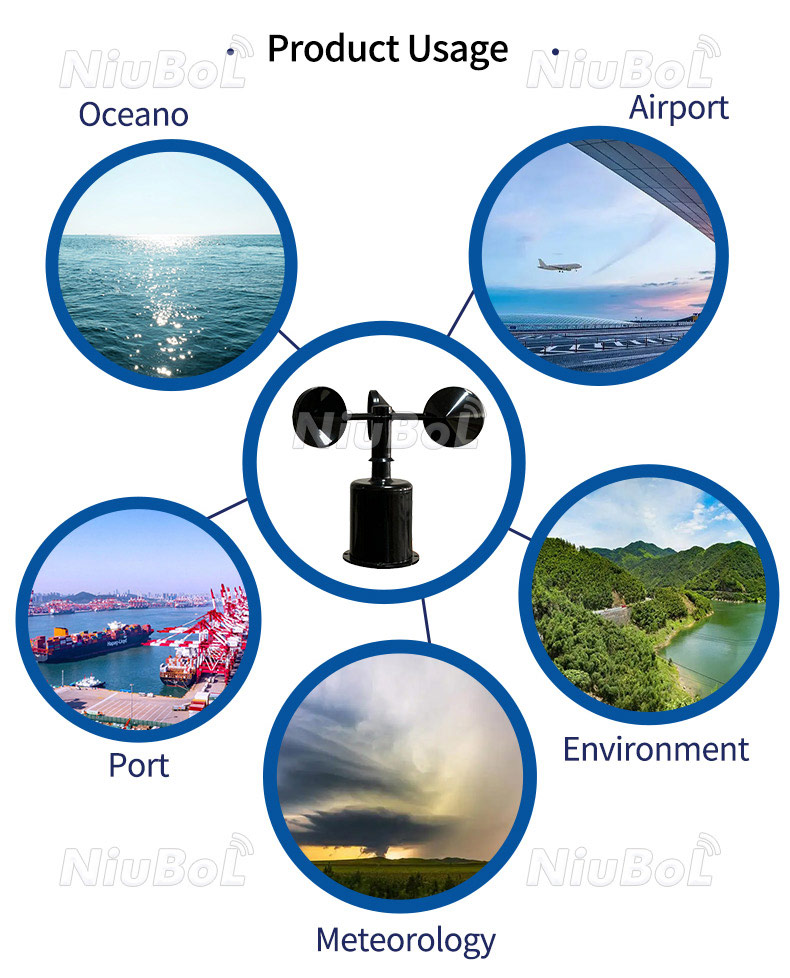

— Blogs —
—Products—
 Consumer hotline +8618073152920
Consumer hotline +8618073152920 WhatsApp:+8615367865107
Address:Room 102, District D, Houhu Industrial Park, Yuelu District, Changsha City, Hunan Province, China
Product knowledge
Time:2023-07-22 15:37:12 Popularity:1494
A wind speed sensor, also known as an anemometer, is a device designed to measure the speed or velocity of the wind. It utilizes different technologies, such as cups, propellers, or ultrasonic methods, to determine the wind speed. The sensor provides real-time data on how fast the wind is blowing.
Wind Speed Sensor Application Value:
Weather Monitoring: Wind speed sensors are commonly used in weather stations and meteorological applications to monitor and report wind conditions. This information is crucial for weather forecasting, climate research, and understanding atmospheric patterns.
Aviation and Aerospace: Wind speed data is essential for aviation safety, especially during takeoff, landing, and flight operations. Wind speed sensors provide pilots with accurate and up-to-date information to make informed decisions and ensure safe aircraft maneuvering.
Renewable Energy: In the field of renewable energy, wind speed sensors are crucial in wind farm installations. By measuring wind speeds, they help determine suitable locations for wind turbines and optimize their performance. This enables efficient power generation from wind energy resources.
Environmental Monitoring: Wind speed data is valuable in environmental monitoring and pollution dispersion studies. It aids in understanding air quality, pollutant dispersal patterns, and the impact of wind on localized pollution conditions.
A wind direction sensor measures the direction from which the wind is blowing. It typically uses a vane or a windsock mechanism to detect wind direction and provide corresponding data.

Wind Direction Sensor Application Value:
Weather Forecasting: Wind direction sensors contribute to accurate weather forecasts by providing critical information about wind patterns. Analysis of wind direction aids in predicting weather changes, air mass movements, and storm patterns.
Navigation and Marine Applications: Wind direction is vital for marine navigation, ensuring safe and efficient sailing. Sailors, boaters, and maritime professionals rely on wind direction sensors to determine optimal routes, adjust sail positions, and calculate vessel performance.
Climate Research: Wind direction data is essential for climate researchers studying atmospheric circulation patterns, global climate change, and local climate variations. It helps in understanding weather systems, ocean currents, and climate modeling.

Air Quality Studies: Wind direction plays a role in analyzing air pollution dispersion patterns. Combined with other meteorological data, wind direction sensors assist in identifying pollution sources, understanding pollutant transport, and determining potential exposure risks.
Both wind speed and wind direction sensors are often used together in various applications to provide comprehensive information about wind conditions. These sensors enable accurate monitoring, analysis, and decision-making in fields such as weather forecasting, aviation, renewable energy, environmental studies, and more.
Related recommendations
Sensors & Weather Stations Catalog
Agriculture Sensors and Weather Stations Catalog-NiuBoL.pdf
Weather Stations Catalog-NiuBoL.pdf
Related products
 Combined air temperature and relative humidity sensor
Combined air temperature and relative humidity sensor Soil Moisture Temperature sensor for irrigation
Soil Moisture Temperature sensor for irrigation Soil pH sensor RS485 soil Testing instrument soil ph meter for agriculture
Soil pH sensor RS485 soil Testing instrument soil ph meter for agriculture Wind Speed sensor Output Modbus/RS485/Analog/0-5V/4-20mA
Wind Speed sensor Output Modbus/RS485/Analog/0-5V/4-20mA Tipping bucket rain gauge for weather monitoring auto rainfall sensor RS485/Outdoor/stainless steel
Tipping bucket rain gauge for weather monitoring auto rainfall sensor RS485/Outdoor/stainless steel Pyranometer Solar Radiation Sensor 4-20mA/RS485
Pyranometer Solar Radiation Sensor 4-20mA/RS485
Screenshot, WhatsApp to identify the QR code
WhatsApp number:+8615367865107
(Click on WhatsApp to copy and add friends)
